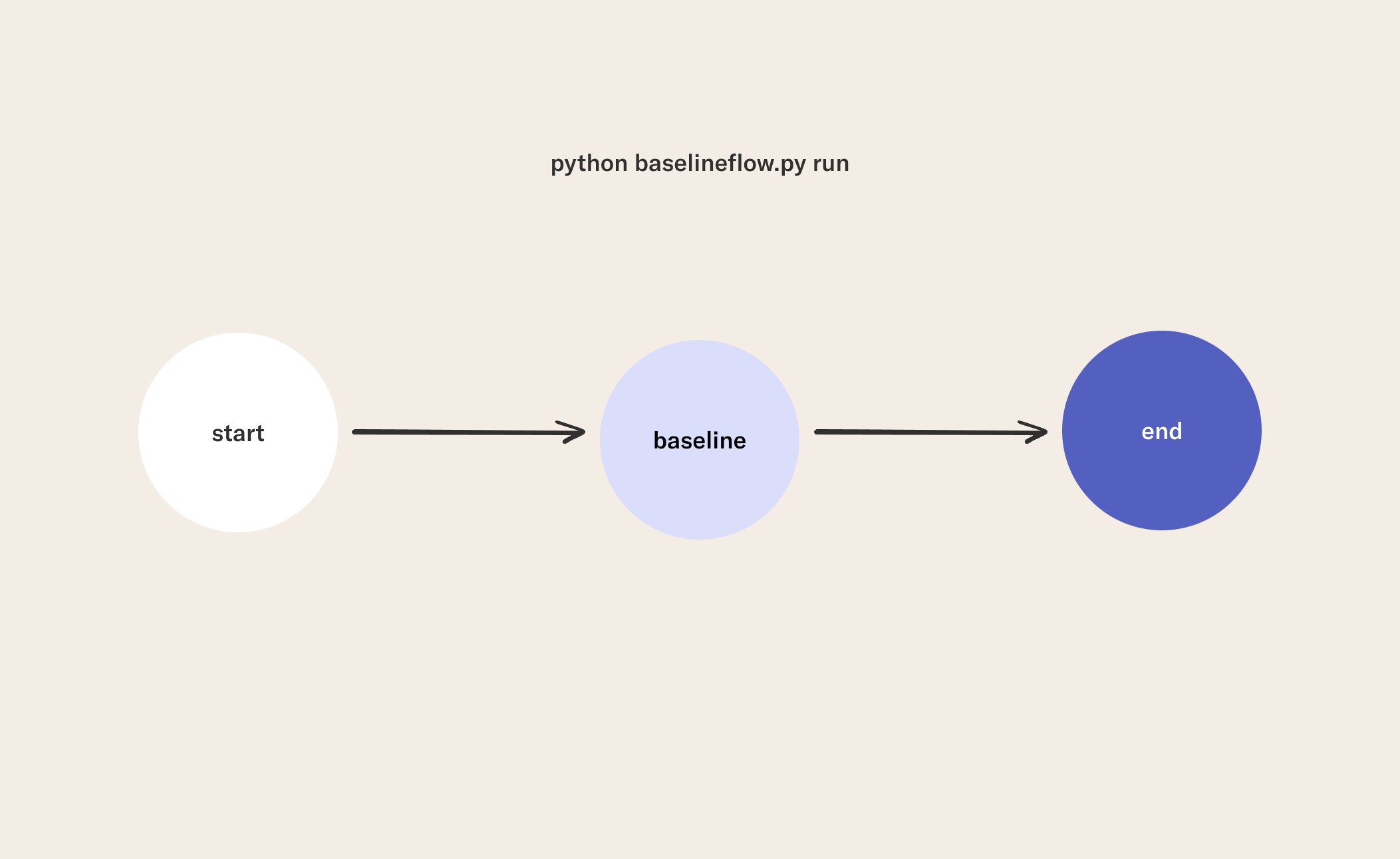Natural Language Processing - Episode 3
This episode references the Python script baselineflow.py.
In the previous episode, you saw how we constructed a model in preparation for Metaflow.
In this lesson, we will construct a basic flow that reads our data and reports a baseline.
At the end of this lesson, you will be able to:
- Operationalize the tasks of loading data and computing a baseline.
- Run and view tasks with Metaflow.
1Best Practice: Create a Baseline
When creating flows, we recommend starting simple: create a flow that reads your data and reports a baseline metric. This way, you can ensure you have the right foundation to incorporate your model. Furthermore, starting simple helps with debugging.
2Write a Flow
For our baseline flow, we have three steps including:
- a
startstep where we read the data, - a
baselinestep, and - an
endstep that will be a placeholder for now.
Below is a detailed explanation of each step:
- Read data from a parquet file in the
startstep.- We use pandas to read
train.parquet. - Notice how we are assigning the training data to
self.dfand the validation data toself.valdfthis stores the data as an artifact in Metaflow, which means it will be versioned and saved in the artifact store for later retrieval. Furthermore, this allows you to pass data to another step. The prerequisite for being able to do this is that the data you are trying to store must be pickleable. - We log the number of rows in the data. It is always a good idea to log information about your dataset for debugging.
- We use pandas to read
- Compute the baseline in the
baselinestep.- The
baselinestep records the performance metrics (accuracy and ROC AUC score) that result from classifying all examples with the majority class. This will be our baseline against which we evaluate our model.
- The
- Print the baseline metrics in the
endstep.- This is just a placeholder for now, but also serves to illustrate how you can retrieve artifacts from any step.

from metaflow import FlowSpec, step, Flow, current
class BaselineNLPFlow(FlowSpec):
@step
def start(self):
"Read the data"
import pandas as pd
self.df = pd.read_parquet('train.parquet')
self.valdf = pd.read_parquet('valid.parquet')
print(f'num of rows: {self.df.shape[0]}')
self.next(self.baseline)
@step
def baseline(self):
"Compute the baseline"
from sklearn.metrics import accuracy_score, roc_auc_score
baseline_predictions = [1] * self.valdf.shape[0]
self.base_acc = accuracy_score(
self.valdf.labels, baseline_predictions)
self.base_rocauc = roc_auc_score(
self.valdf.labels, baseline_predictions)
self.next(self.end)
@step
def end(self):
msg = 'Baseline Accuracy: {}\nBaseline AUC: {}'
print(msg.format(
round(self.base_acc,3), round(self.base_rocauc,3)
))
if __name__ == '__main__':
BaselineNLPFlow()
3Run the Flow
python baselineflow.py run
In the next lesson, you will learn how to incorporate your model into the flow as well as deal with branching for parallel runs.